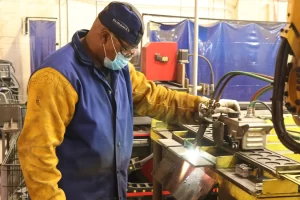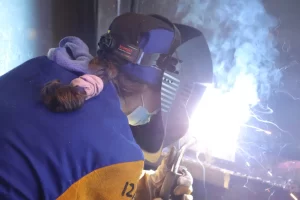To prove that you can do high-quality work safely, you must obtain a certificate for welding to become a welder. When it comes to welding certificates, you have a lot of alternatives, and picking the best ones might help you narrow down your prospects. A Specialized certificate for welding can demonstrate to future employers your capacity for advancement, reward you with improved work security and wage possibilities, and provide documentation of your essential traits and competencies. We address frequently asked queries concerning welding certifications in this article.
The American Welding Society is the source of the most popular and well-recognized welding credentials (AWS). However, a lot of different organizations provide welding training and certification exams. Companies can also offer certifications by hiring an outside organization or certifying their own welders. Finding a place to earn your welding certification is typically simply because there is so much choice in how and where you may take the test.
Some locations that provide certification exams and welding technician programs are:
You must pass a welding test for the welding certification you want to become a certified welder. You can accomplish this by enrolling in a welding technician program that instructs you in welding through classroom study and hands-on training. You can schedule your exam by contacting any approved testing facility if you have prior welding training. Some businesses pay to hire professional welding inspectors to examine their workers, while others have a manager do it.
Welds and codes are subject to various testing welding careers, which include pressure vessel tests, plate welding tests, structural welding tests, food service welding tests, and tests used in the aerospace industry. Additionally, many welding certification exams depend on the metal’s thickness, type, location, and the welder’s physical position. Regardless of the particular exam type, the majority of welding certification tests involve three fundamental procedures:

A qualified welder may have an official AWS certification or a certification from their employer for a particular welding task. Depending on the particular circumstances the welder is operating under, the organization’s regulations and the type of work the organization controls, each welding certification involves a separate set of processes and procedures.
Each qualification demonstrates a professional’s aptitude for carrying out various welding activities. For instance, a qualified submerged arc welder has a specialist understanding of the submerged arc welding career technique, whereas a certified welder is familiar with conventional welding methods.
There are four primary welding credentials based on the welding process, eight welding certifications based on welding jobs, and at least nine different welding certifications depending on training and experience. However, certifications can be developed for certain circumstances and businesses. For instance, the United Association of Pipefitters offers around 60 distinct pipe welding examinations.
Getting a welder certification from welding trade schools can take anywhere from six weeks to 18 months, including instruction, depending on the certification’s difficulty and your level of experience. It usually takes six weeks to three months to complete a more fundamental certification, such as the 3G welding test for a plate in a vertical position.
A more challenging certification, like the 6G welding test for a pipe at a 45-degree angle, can take a beginning anywhere between 12 and 18 months to complete. It can take less time to become certified if you have more welding expertise or can pick things up more rapidly.

Certified welders possess written, verifiable certificates attesting to their ability to manufacture welds that adhere to established standards while following welding program parameters. Prescribed requirements often imply that the weld satisfies a standard welding code and passes tests like radiographic (X-ray), bend, or visual inspection criteria.
A welder can only be certified to weld within the confines of that certification after passing the certification test that best matches the codes they work under. You may possess as many certifications as you require for the position.
Even if they only possess one certification for a basic weld, anyone with a welding certification can claim to be a certified welder. Due to this, it’s crucial to describe a welder’s certificates in detail, along with the authority that granted them and whether or not they are still valid.
Most AWS certifications require a six-month renewal period. A welder can pay to be included on the national AWS certified registry after receiving certification, which many businesses like to see.
Read More